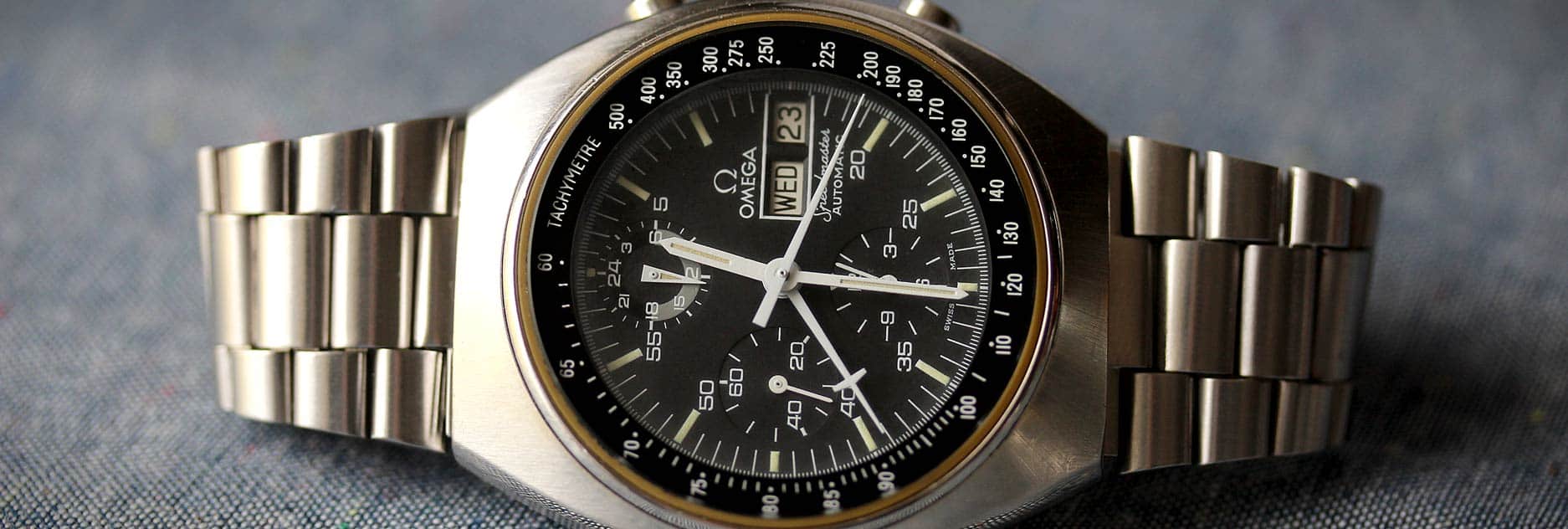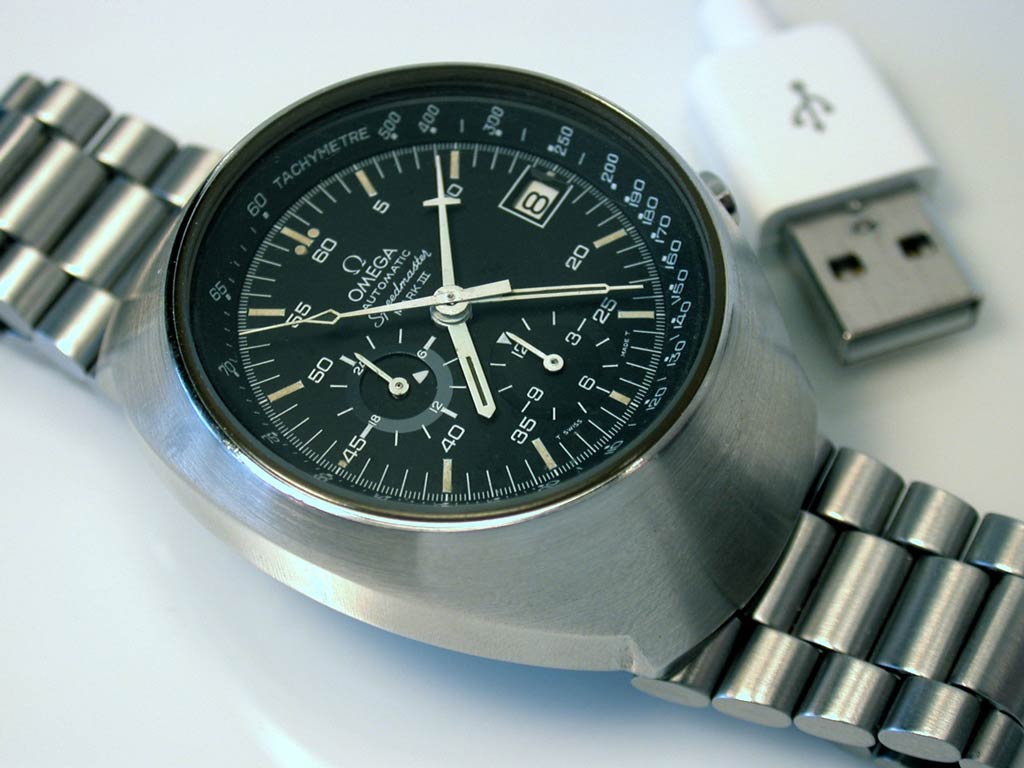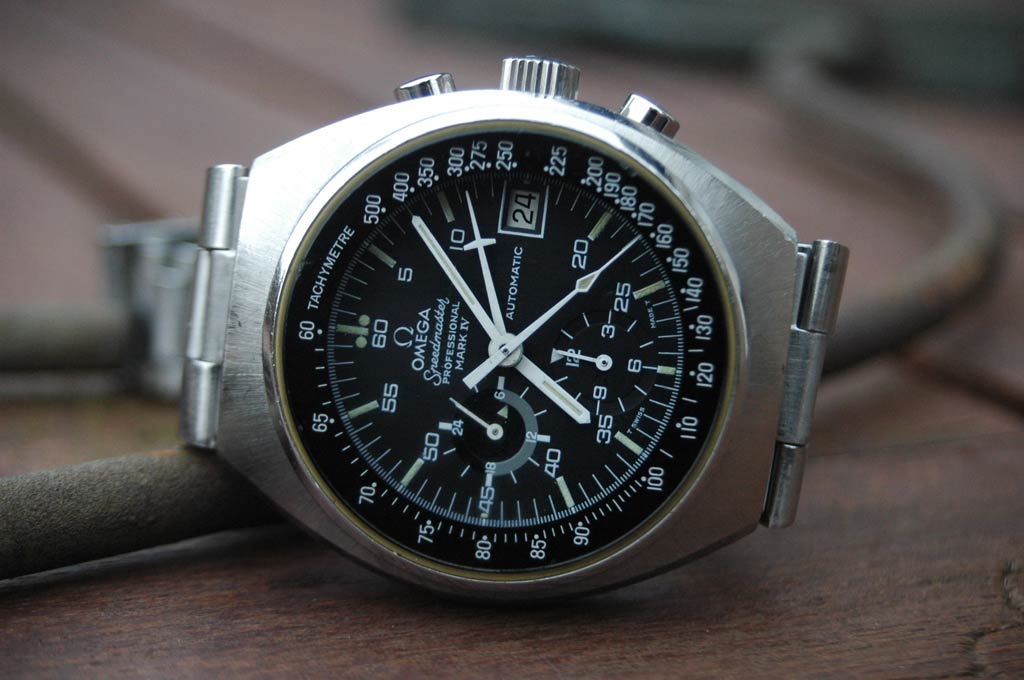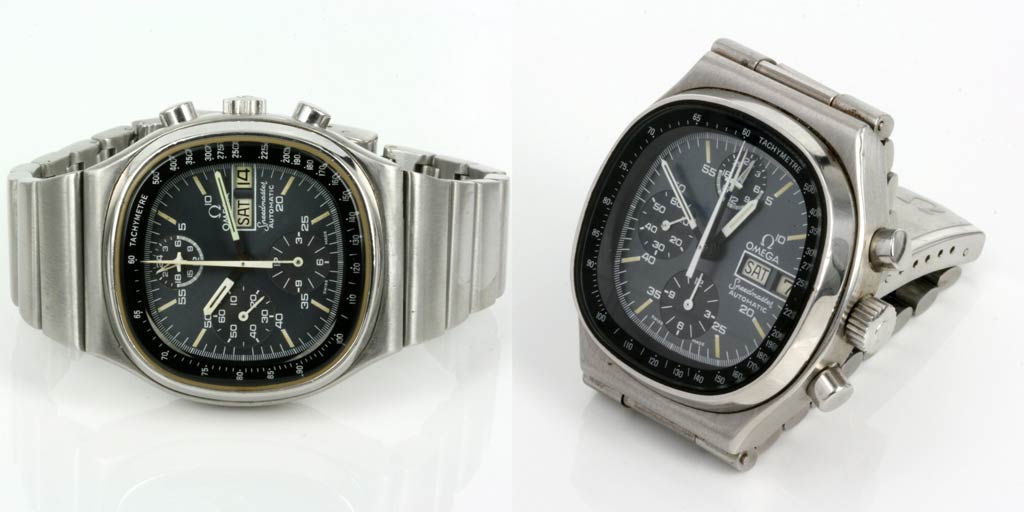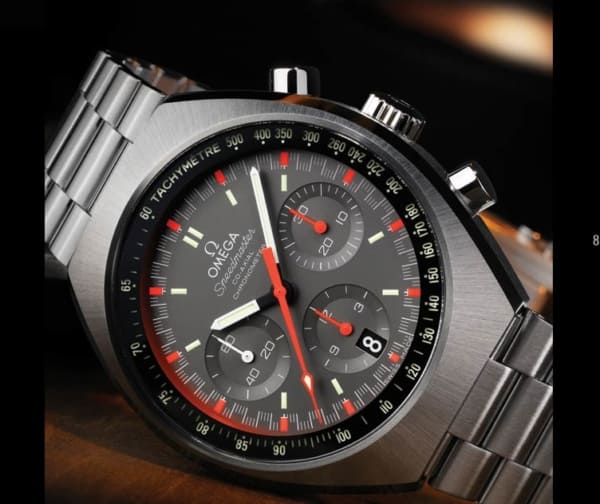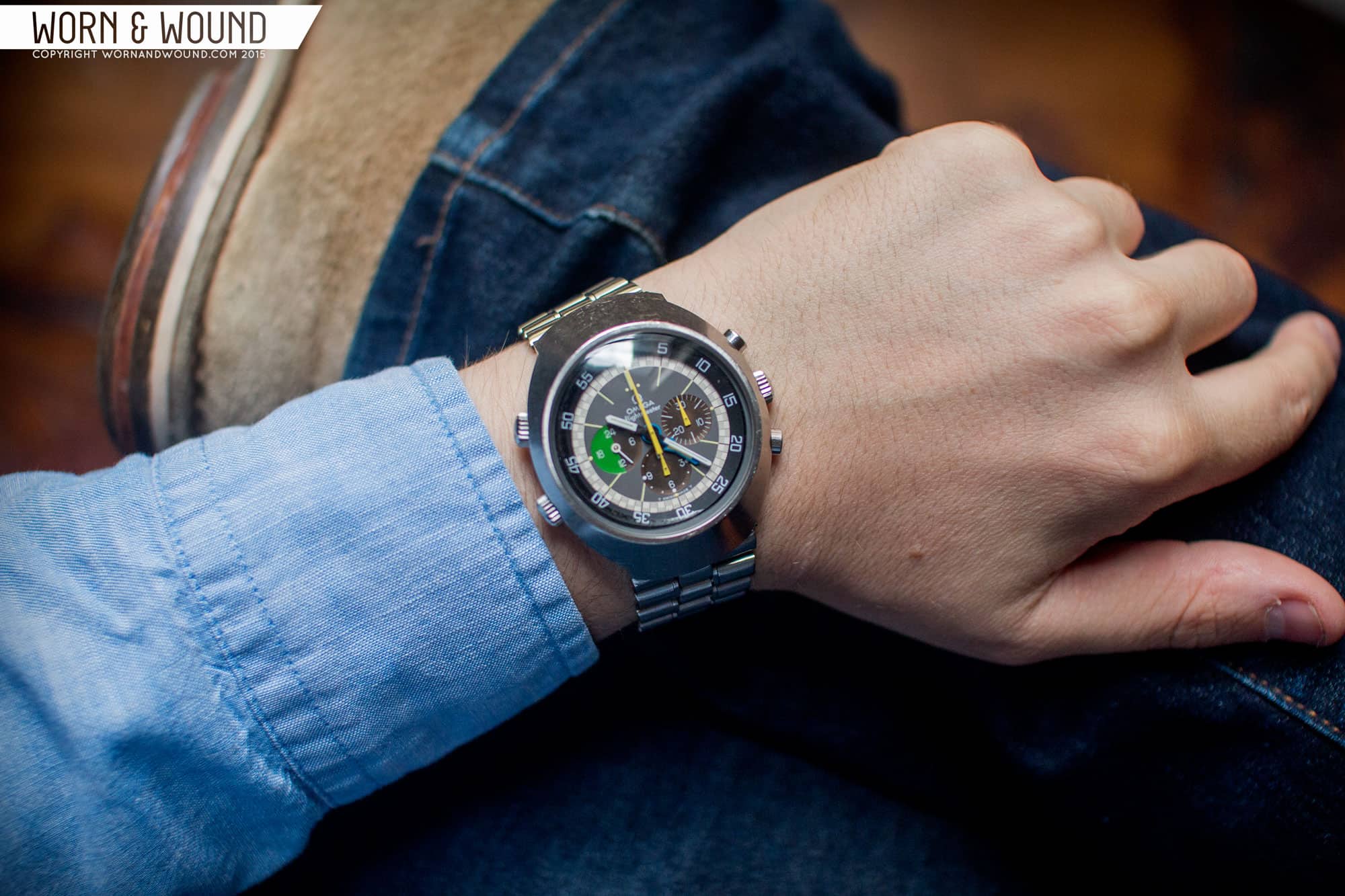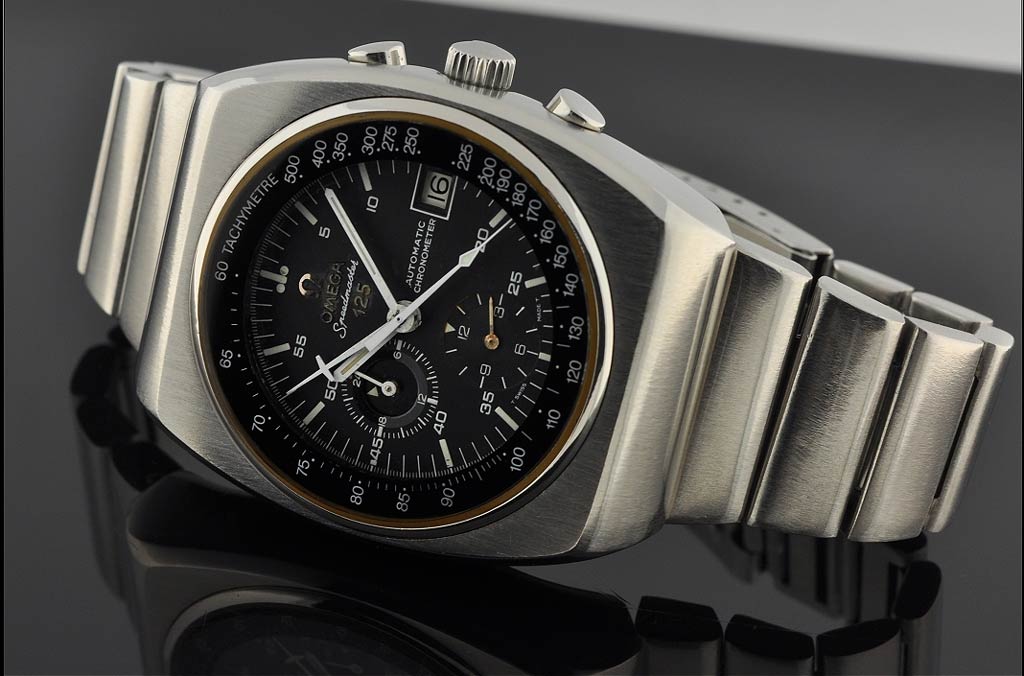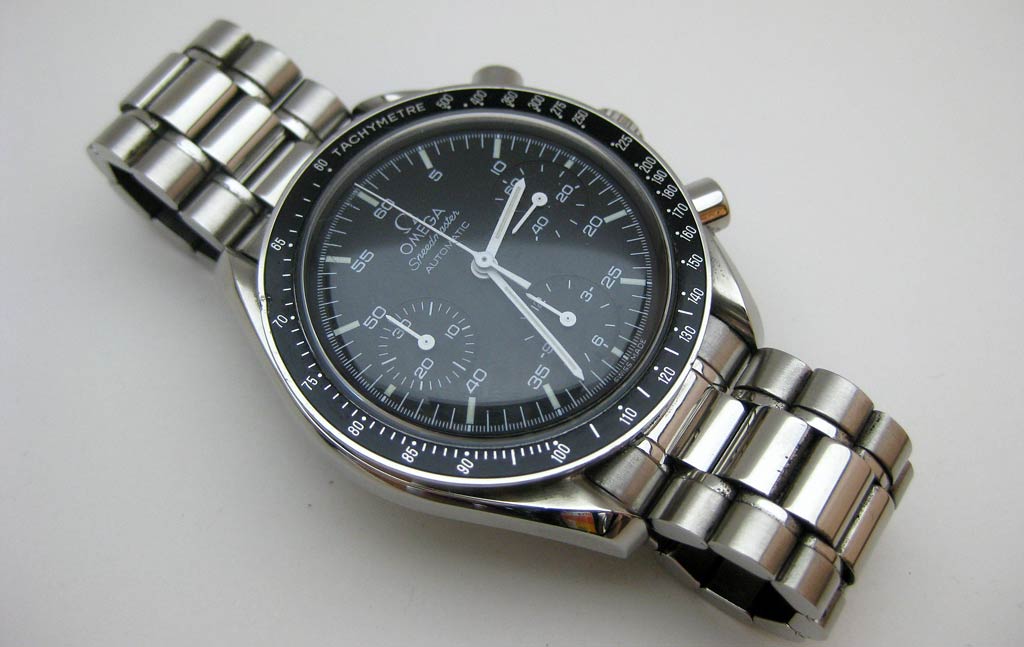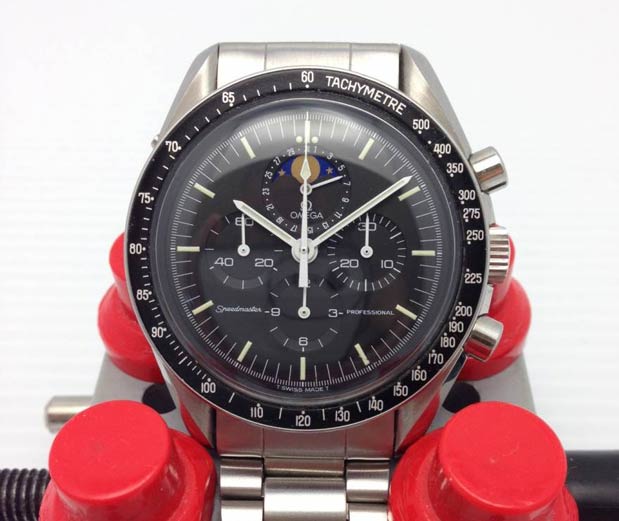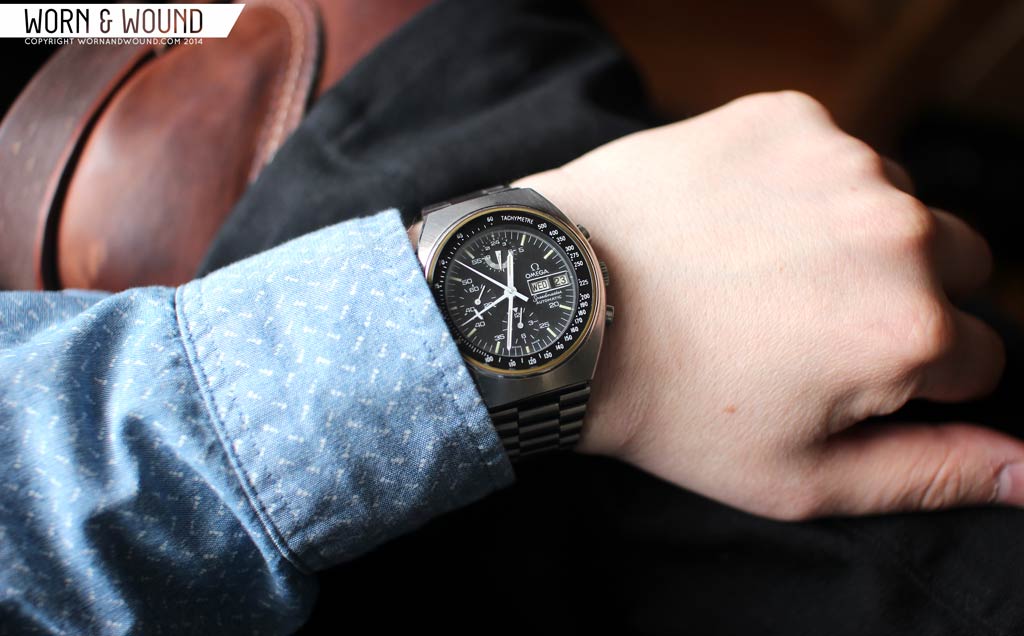OK. We’ve surveyed the Speedmaster’s early years and its evolution to Professional status. And we’ve taken a look at how Omega reacted to the quartz crisis and its effect on the Speedmaster line, which was one BIG variation. But on its way to iconic status, the Speedmaster has gone through other variations just as significant as the electronic models.
These included things like straight lugs (which were the original configuration), twisted lugs, the appearance of a crown guard, multiple case shapes, an applied Ω symbol to the dial, a white “panda” dial that was exclusive to the Japanese market, sapphire crystals, different movements (including automatics), display backs, moon phases, and even a very rare Japanese market perpetual calendar.
Another oddity occasionally seen with vintage Speedmasters is the so-called “tropic” dial. “Tropic” refers to a black dial which has turned brown with age, as if it had been out in the sun too long. However, a likely explanation for the color change is a chemical reaction or poor formulation in the dial paint rather than UV radiation.
The Mark Series
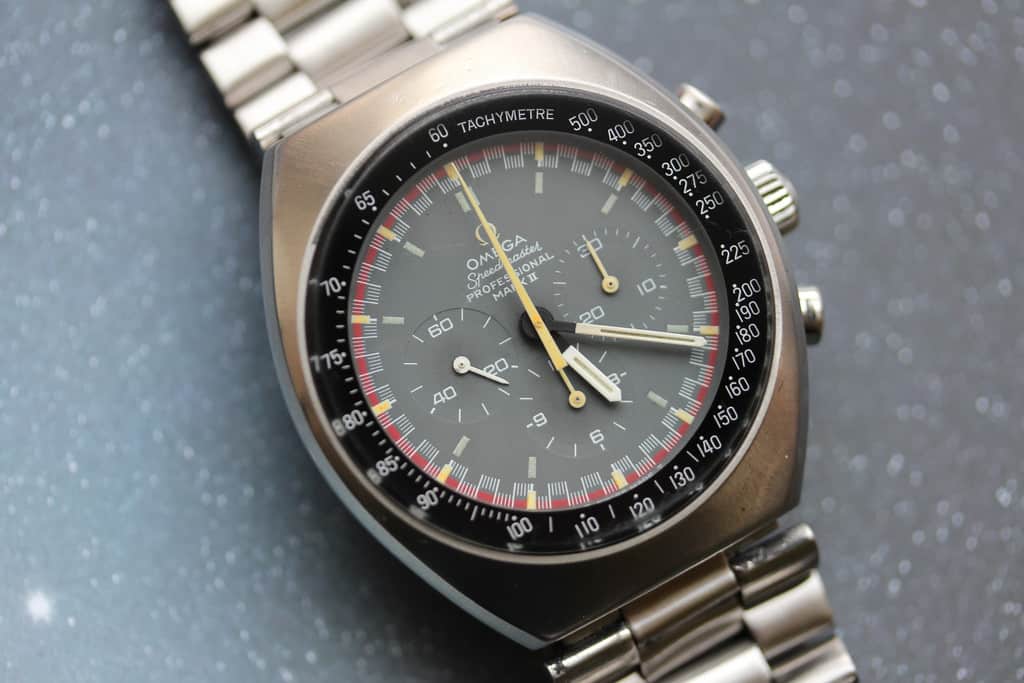









 Featured Videos
Featured Videos




